New Scientist covers the latest developments in science and technology that will impact your world. New Scientist employs and commissions the best writers in their fields from all over the world. Our editorial team provide cutting-edge news, award-winning features and reports, written in concise and clear language that puts discoveries and advances in the context of everyday life today and in the future.
Christmas & New Year special
Elsewhere on New Scientist
A year of two stories • This year, the full impacts of AI became obvious, but the biggest story was still global warming
New Scientist International Edition
Santa fishes you a merry Christmas
A problem with cosmic clumps • Material in the nearby universe seems less clustered than we think it should be
Having children earlier in life is genetically linked to dying younger
Unusual hedgehog from eastern China is new to science
Tiny plastic balls confirm the best way to pack a few spheres is in a sausage
Jumping spiders seem to be able to recognise each other
Great Wall of China is protected by a coat of lichen and moss
The moon may enter a new geological period thanks to us
Removing zombie cells may help MS • Senolytic drugs can remove damaged cells, allowing degraded tissue around nerves to recover
Insects thrive on solar farms planted with native flowers
Giant stream of stars may reveal dark matter’s secrets
We now know why we find some jokes funny – thanks to Seinfeld
How the seams on a baseball can alter its trajectory
Gesturing as you talk may help you speak languages like a local
Honey-hunting birds answer human calls
Strange fungi look like Dune worms
AI can tell which chateau Bordeaux wines are from
Really brief
Extreme heat like we’ve never seen before • Greenhouse gas levels and the arrival of El Niño pushed the world’s climate into “uncharted territory” in 2023
The viral superconductor • A claimed breakthrough substance called LK-99 became an unlikely social media star
Covid-19 crisis phase ended but virus still lingers
The ultimate bathroom tile had mathematicians celebrating
India made history with low-budget moon landing
Obesity revolution • Demand for the drugs Wegovy and Ozempic led to restrictions on use and dangerous counterfeits
Clever chatbots launched AI boom • Highly versatile large language models have taken the world by storm
Rise of cancer in younger people sparked concern
Spy balloon saga inflated US-China political tensions
The year’s best space images • Stargazers and space telescopes stunned us with a wealth of wonders
Looking back at 2023 • New Scientist’s columnists look back at effective altruism, the state of the environment, a new human story and the hunt for universal truths
Star of the show
Lottie and the River • A short story for New Scientist by astrophysicist turned award-winning science fiction author Alastair Reynolds
Your letters
MYSTERIES OF THE MUSEUM
Yuletide yarns • Welcome to New Scientist’s festive features, a package always guaranteed to surprise and delight. This year, among other things, we ask why nature never invented flightless bats (page 50), hunt down the extreme life forms living in your kitchen (page 64) and raise a glass to celebrate the physics of cocktails (page 62). Happy holidays!
In their dreams • Do other animals dream? And if so, what do their unconscious minds conjure while they’re sleeping, asks Michael Marshall
The mystery of the quantum lentils • Are these humdrum pulses secretly communicating with quantum signals? Thomas Lewton listens in
Walking with bats • Our...
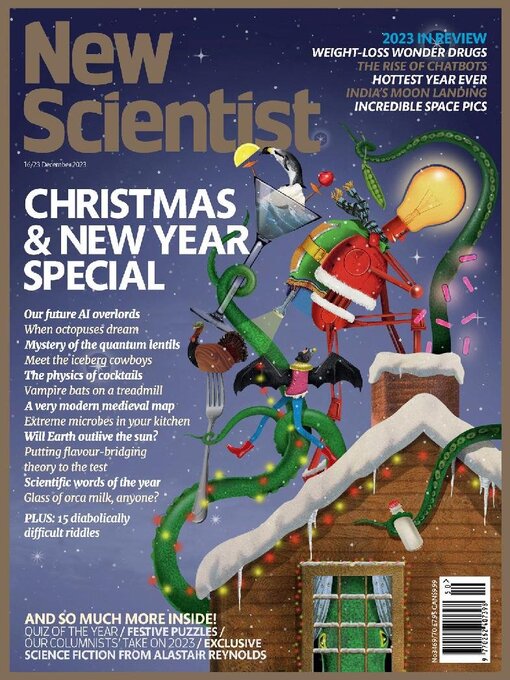
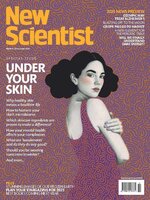 Dec 28 2024
Dec 28 2024
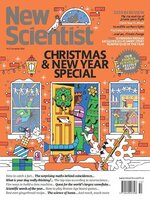 Dec 14 2024
Dec 14 2024
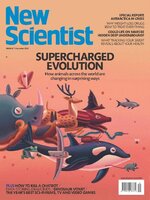 Dec 07 2024
Dec 07 2024
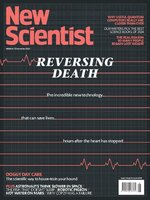 Nov 30 2024
Nov 30 2024
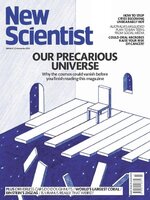 Nov 23 2024
Nov 23 2024
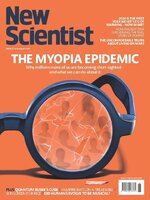 Nov 16 2024
Nov 16 2024
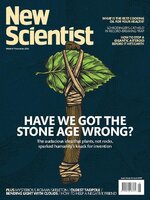 Nov 09 2024
Nov 09 2024
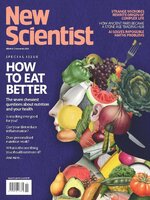 Nov 02 2024
Nov 02 2024
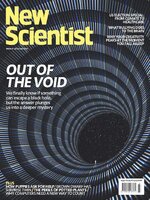 Oct 26 2024
Oct 26 2024
 Oct 19 2024
Oct 19 2024
 Oct 12 2024
Oct 12 2024
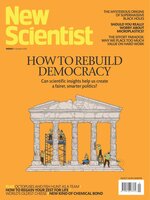 Oct 05 2024
Oct 05 2024
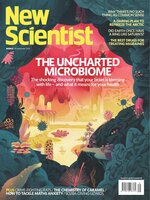 Sep 28 2024
Sep 28 2024
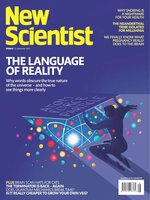 Sep 21 2024
Sep 21 2024
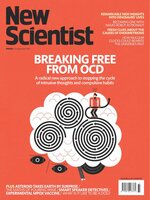 Sep 14 2024
Sep 14 2024
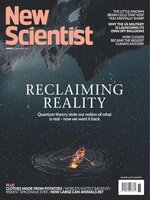 Sep 07 2024
Sep 07 2024
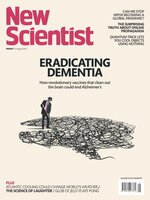 Aug 31 2024
Aug 31 2024
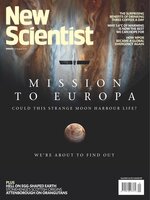 Aug 24 2024
Aug 24 2024
 Aug 17 2024
Aug 17 2024
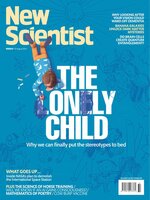 Aug 10 2024
Aug 10 2024
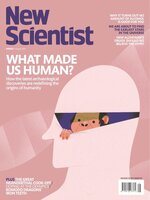 Aug 03 2024
Aug 03 2024
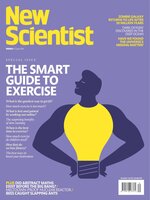 Jul 27 2024
Jul 27 2024
 Jul 20 2024
Jul 20 2024
 Jul 13 2024
Jul 13 2024
